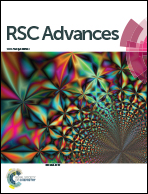Novel nanoscale topography on poly(propylene carbonate)/poly(ε-caprolactone) electrospun nanofibers modifies osteogenic capacity of ADCs
Abstract
In this study, we electrospun novel poly(propylene carbonate)/poly(ε-caprolactone) (PPC/PCL) nanofibers with a special nanoscale topography using a simple process. The characteristics of the fabricated scaffolds were investigated using Fourier transform infrared spectroscopy (FT-IR), X-ray diffraction analyses (XRD), thermogravimetric analyses (TG), differential scanning calorimetry (DSC), scanning electron microscopy (SEM), water contact angle measurements (WCA), tensile tests and Brunauer–Emmett–Teller (BET) surface area analysis. To determine whether the nanoscale topography altered mesenchyme stem cell adhesion proliferation and differentiation behavior, adipose tissue-derived stromal cells (ADCs) were cultured on pure PPC electrospun scaffolds with smooth nanotopography and PPC/PCL (20 wt% PCL) hybrid scaffold with nanoscale topography. The results reveal that PPC/PCL electrospun fibers with special inter-surface-connected pores possess a high BET surface area and could promote ADCs adhesion and proliferation. According to alizarin red S staining and von-Kossa staining assays, there are more calcium nodule deposits on scaffolds with inter-surface-connected pores.


 Please wait while we load your content...
Please wait while we load your content...